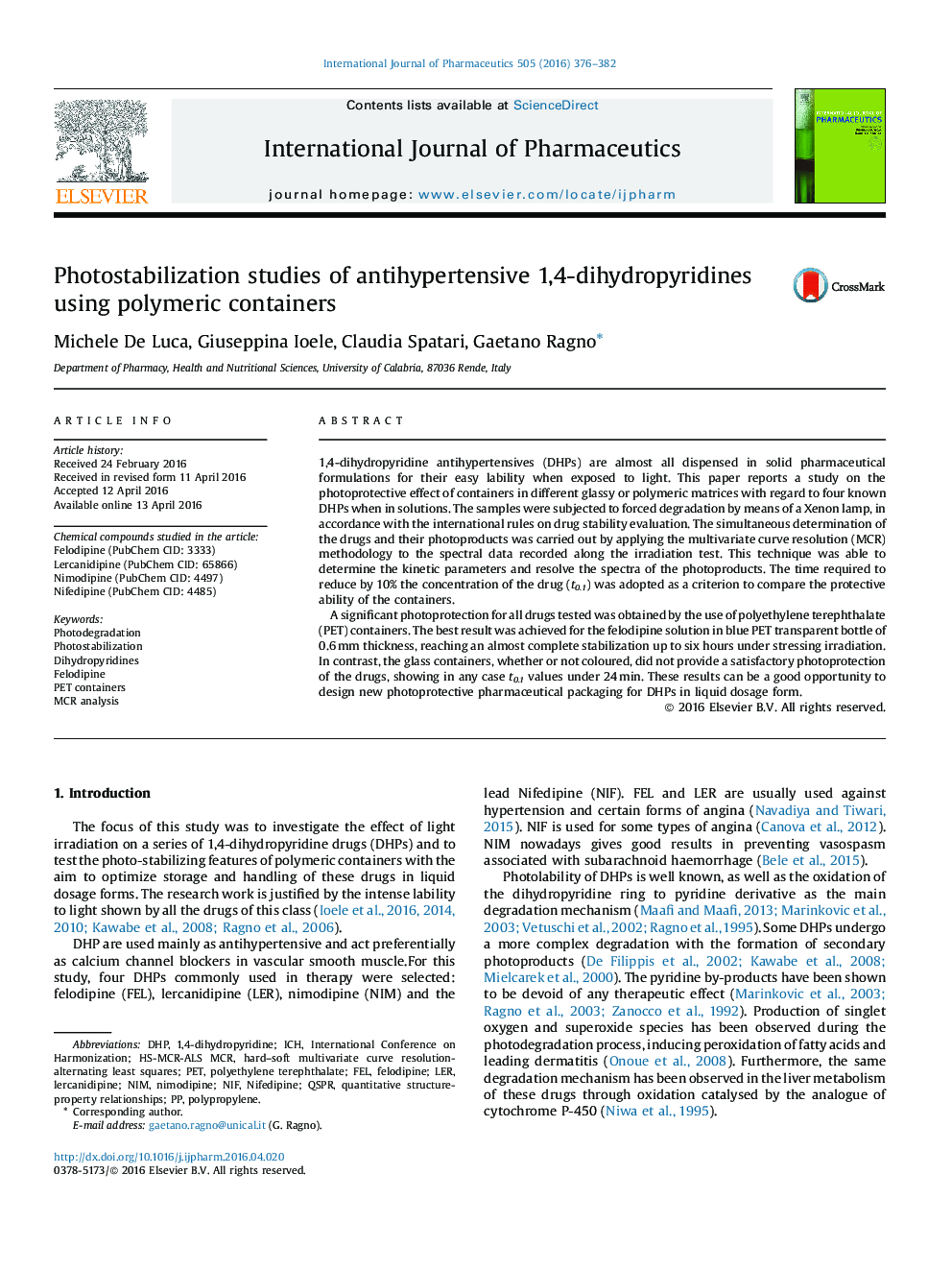| Article ID | Journal | Published Year | Pages | File Type |
|---|---|---|---|---|
| 2500877 | International Journal of Pharmaceutics | 2016 | 7 Pages |
1,4-dihydropyridine antihypertensives (DHPs) are almost all dispensed in solid pharmaceutical formulations for their easy lability when exposed to light. This paper reports a study on the photoprotective effect of containers in different glassy or polymeric matrices with regard to four known DHPs when in solutions. The samples were subjected to forced degradation by means of a Xenon lamp, in accordance with the international rules on drug stability evaluation. The simultaneous determination of the drugs and their photoproducts was carried out by applying the multivariate curve resolution (MCR) methodology to the spectral data recorded along the irradiation test. This technique was able to determine the kinetic parameters and resolve the spectra of the photoproducts. The time required to reduce by 10% the concentration of the drug (t0.1) was adopted as a criterion to compare the protective ability of the containers.A significant photoprotection for all drugs tested was obtained by the use of polyethylene terephthalate (PET) containers. The best result was achieved for the felodipine solution in blue PET transparent bottle of 0.6 mm thickness, reaching an almost complete stabilization up to six hours under stressing irradiation. In contrast, the glass containers, whether or not coloured, did not provide a satisfactory photoprotection of the drugs, showing in any case t0.1 values under 24 min. These results can be a good opportunity to design new photoprotective pharmaceutical packaging for DHPs in liquid dosage form.
Graphical abstractFigure optionsDownload full-size imageDownload high-quality image (160 K)Download as PowerPoint slide
